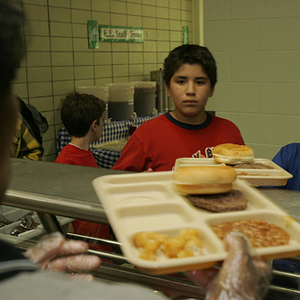 At last month’s American Educational Research Association (AERA) conference in San Francisco, one item discussed was a National Center on Education Statistics (NCES) white paper, which proposes changes to how the United States Department of Education classifies the socioeconomic status (SES) of children.
At last month’s American Educational Research Association (AERA) conference in San Francisco, one item discussed was a National Center on Education Statistics (NCES) white paper, which proposes changes to how the United States Department of Education classifies the socioeconomic status (SES) of children.
Under the NCES proposal — originally published last November — federal government agencies would incorporate U.S. Census information — including data on average neighborhood home size and local unemployment rates — as factors that could alter results on National Assessment of Educational Progress (NAEP) tests. The plan would also connect children’s test scores with broader indicators of SES, including the number of times a family has relocated over a year’s time as well as whether a child’s parents rent or own their current home.
Currently, the NCES uses an anonymous, 13-item questionnaire, in conjunction with schools’ federal free-lunch records, to measure children’s SES.
Brookings Institution Education Researcher Tom Loveless said that using free-lunch data is not an accurate gage of student poverty however. Describing the current measurements in USA Today, he called them “crude indicators” of poverty; although the current standards note parental income, the same measurements tell very little about parents’ educational levels or types of employment.
The National School Lunch Program serves more than 31 million children, the United States Department of Agriculture reports. However, the NCES believes that the program only serves about 80 percent of the nation’s eligible young people.
“It is not entirely predictable what changes might accompany the introduction of a new SES measure,” the NCES paper concluded. “But if such a measure proves to be more valid than current measures, it is possible that more attention could be given to the importance of the SES-achievement relationship and to a more equitable distribution of educational resources.”
Photo credit: John Amis, UGA College of Ag / Flikr


























